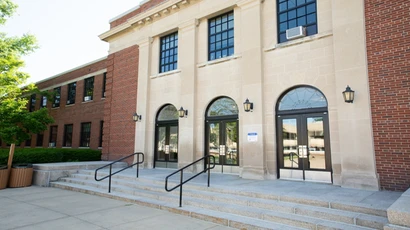
Discrimination Complaint Procedure
Discrimination Complaint Procedure
Discrimination Procedure for Students
Discrimination Procedure for Faculty/Staff
The State University of New York, in its continuing effort to seek equity in education and employment and in support of federal and state anti-discrimination legislation, has adopted a new complaint procedure (April, 2015) for the prompt and equitable investigation and resolution of allegations of unlawful discrimination on the basis of race, color, national origin, religion, age, sex, sexual orientation, disability, veteran status or marital status. Harassment is one form of unlawful discrimination on the basis of the above protected categories. Conduct that may constitute harassment is described under the definitions below. This complaint procedure may be used by any student or employee of a state-operated campus of the University.
Employee grievance procedures established through negotiated contracts, academic grievance review committees, student disciplinary grievance boards and any other procedures defined by contract will continue to operate as before. Furthermore, this procedure does not in any way deprive a complainant of the right to file with outside enforcement agencies, such as the New York State Division of Human Rights, the Equal Employment Opportunity Commission, the Office for Civil Rights of the United States Department of Education, and the Office of Federal Contract Compliance of the United States Department of Labor. However, after filing with one of these outside enforcement agencies, or upon the initiation of litigation, the complaint will be referred to the Office of University Counsel for review.
This procedure provides a mechanism through which the University may identify, respond to, and prevent incidents of illegal discrimination. The University recognizes and accepts its responsibility in this regard and believes that the establishment of this internal, non-adversarial grievance process will benefit student, faculty, staff, and administration, permitting investigation and resolution of problems without resorting to the frequently expensive and time-consuming procedures of state and federal enforcement agencies or courts.
The University Police also has a Silent Witness Program, which lets an individual electronically report a crime or incident that has been witnessed. Reports regarding racist, homophobic, other discriminatory comments/actions, or harassment, will be sent to the Affirmative Action Officer/Title IX Coordinator as well as University Police. If the event witnessed is a crime, University Police will investigate and follow up as much as possible. If it is a bias incident, the report will be forwarded to the Office of Student Conduct, and the Office of Affirmative Action/Title IX Coordinator. If the individual submitting the report leaves their contact information, the Police Department or other involved parties will be able to provide an update on the case. The form may be submitted anonymously, however.
Definitions:
Sexual Harassment in the Employment setting is defined as:
Unwelcome sexual advances, requests for sexual favors, and other verbal or physical conduct of a sexual nature when any of the following occurs:
-
Submission to such conduct is made a term or condition of an individual's continued employment, promotion or other condition of employment.
-
Submission to or rejection of such conduct is used as a basis for employment decisions affecting an employee or job applicant.
-
Such conduct is intended to interfere with an individual's work performance, or creates an intimidating, hostile, or offensive work environment.
Sexual Harassment in the Educational setting is defined as:
Unwelcome conduct of a sexual nature. Sexual harassment can include unwelcome sexual advances, requests for sexual favors, and other verbal, nonverbal, or physical conduct of a sexual nature. Sexual harassment of a student denies or limits, on the basis of gender, the student's ability to participate in or to receive benefits, services, or opportunities in the educational institution's program.
Harassment on the Basis of Protected Characteristic(s) other than Sex/Gender:
Harassment based on race, color, age, religion, or national origin, disability, sexual orientation or other protected characteristics is oral, written, graphic or physical conduct relating to an individual's race, color, or national origin (including an individual's ancestry, country of origin, or country of origin of the individual's parents, family members, or ancestors) or other protected characteristics that is sufficiently severe, pervasive, or persistent so as to interfere with or limit the ability of an individual to participate in or benefit from the educational institution's programs or activities.
Information is adapted from The State University of New York Discrimination Complaint Procedure
